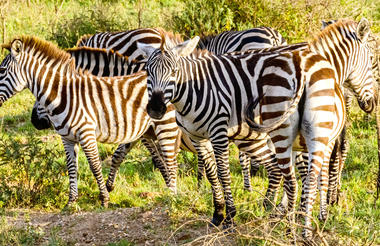Rising up from the Indian Ocean, like a colourful floating Lego town, the city of Male is one of the world's smallest national capitals. For an authentic Maldivian experience, the tiny capital packs a cultural punch. This bustling city displays a stark contrast to the rest of the tranquil sun-soaked islands that make up the Maldives. Renowned for its mosques, pretty multi-storied buildings, a popular fish and produce markets, Male is the economic heart of this tropical archipelago. Must-sees include the incredible National Museum; the golden-domed Grand Friday Mosque; and the Hukuru Miskiy Mosque, a 17th-century mosque constructed out of intricately carved white coral stones. After exploring the sights, visitors can enjoy lunch along the esplanade overlooking the impossibly turquoise waters.

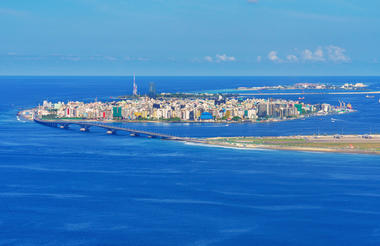

Comoros
Ilha de Mozambique Chapel of Nossa Senhora de Baluarte Fort São Sebastião Ibo Island Quirimbas Archipelago Kilwa Kisiwani Island Zanzibar Stone TownMeemu Atoll – also known as Mulaku Atoll – is the administrative region of the Maldives that encompasses the natural atoll of the same name. Comprised of eight inhabited islands and over 20 deserted islands, Meemu Atoll boasts countless pristine beaches lapped by turquoise waters. Renowned for its first-class dive sites, the region attracts visitors with its underwater coral wonderland, manta rays, whale sharks, and an ancient wreck off the coast of Kolhuvaariyaafushi Island. Adventurous surfers will also delight in the area due to the prime surf breaks at Boahuraa Point, Veyvah Point, and Mulee Point. Culture enthusiasts should make sure to visit the beautiful historical mosque on Kolhufushi Island.
.

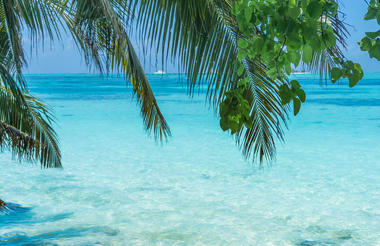
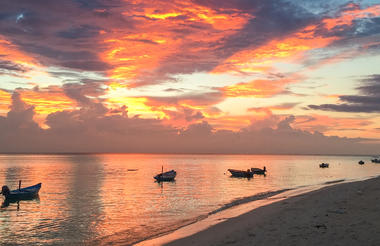
Comoros
Ilha de Mozambique Chapel of Nossa Senhora de Baluarte Fort São Sebastião Ibo Island Quirimbas Archipelago Kilwa Kisiwani Island Zanzibar Stone TownLying on the southernmost tip of the Maldives is Addu, a heart-shaped atoll located a few degrees south of the equator. The pristine islands are blanketed by tropical forests, marshlands, and freshwater mangroves surrounded by crystal-clear turquoise lagoons, thriving coral reefs, and a colourful array of marine life. A nature lover's playground, the region is widely renowned for its underwater wonderland of wreck dives, large manta rays, sharks, turtles and fish, as well as other animals that occupy the island. Addu Nature Park at Koattey Island is a tropical paradise where visitors can canoe through the mangrove forests, kayak in the lake, and cycle around the wetlands. Leisure seekers can enjoy a range of watersports, fishing, biking, sailing, and feasting on local cuisine influenced by Asian cuisine at the local restaurants.
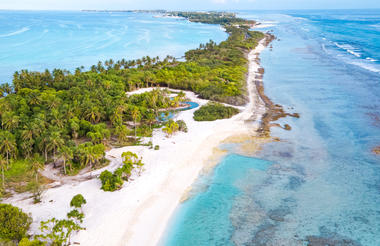
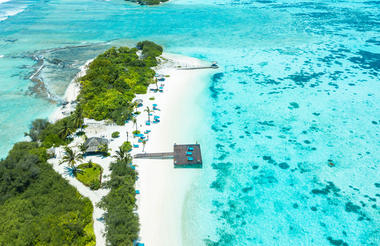
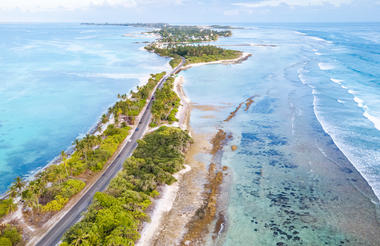
Comoros
Ilha de Mozambique Chapel of Nossa Senhora de Baluarte Fort São Sebastião Ibo Island Quirimbas Archipelago Kilwa Kisiwani Island Zanzibar Stone TownMahe is the largest of the Seychelles islands and encompasses the country’s international airport as well as its capital, the surprisingly quiet and peaceful town of Victoria, home to roughly a third of the national population, as well as many good restaurants and entertainment venues. Mahe has a mountainous interior characterised by dense tropical forests and stony outcrops, while its coast is blessed with some 75-odd beautiful beaches. The best known of these is the idyllic, white-sand Beau Vallon, fringed by deep bays that offer excellent swimming, snorkelling and scuba diving.
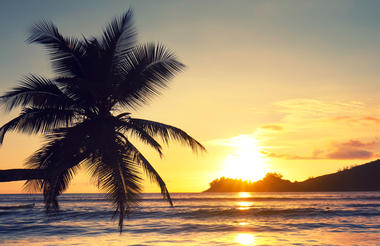
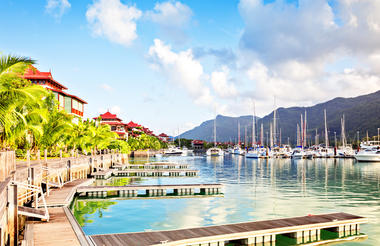
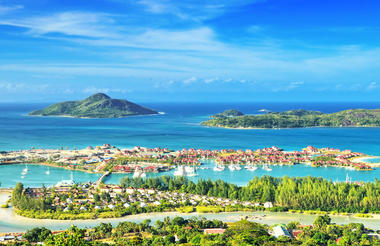
Comoros
Ilha de Mozambique Chapel of Nossa Senhora de Baluarte Fort São Sebastião Ibo Island Quirimbas Archipelago Kilwa Kisiwani Island Zanzibar Stone TownThis picture-perfect island is part of the Seychelles Archipelago featuring ox-cart taxis, a verdant interior, calm aquamarine bays and stunningly beautiful beaches strewn with massive boulders; it is an utterly idyllic holiday destination. Historically, La Digue was settled by French colonists in the late 18th century, and remnants of its colonial past, such as the L'Union Estate with its traditional plantation house and vanilla fields, are still evident. La Digue has retained a charming old-world atmosphere and a strong Creole identity, with traditions and ceremonies still a focal point of the island’s culture. Major attractions include the gorgeous Anse Source d'Argent beach and the Veuve Nature Reserve, home to the elusive black paradise flycatcher, of which there are only a couple of hundred left on earth.
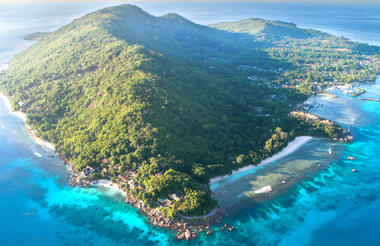
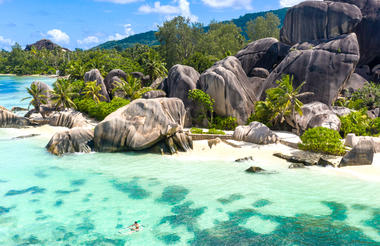
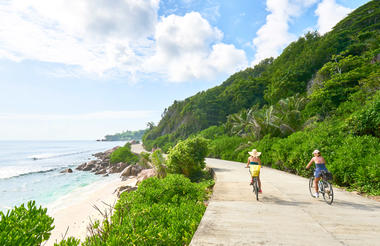
Comoros
Ilha de Mozambique Chapel of Nossa Senhora de Baluarte Fort São Sebastião Ibo Island Quirimbas Archipelago Kilwa Kisiwani Island Zanzibar Stone TownDotting the Indian Ocean, Praslin Island is the second largest of the Seychelles’ islands and boasts a tranquil, laidback atmosphere. Stretching for almost 40 square kilometres, the island landscape features lush tropical jungle, fringed by pristine world-famous beaches lapped by crystal-clear turquoise waters. According to local legend, the island served as a pirate hideout throughout the 18th century, and today it is a popular resort holiday destination. Praslin is home to the UNESCO World Heritage Site, the Vallee de Mai Nature Reserve with its groves of ancient coco de mer palms which produce the largest seeds in the plant kingdom. Popular activities include: turtle and tortoise spotting, snorkelling, diving and boating.
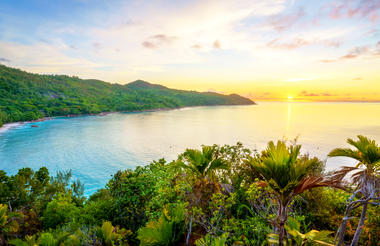
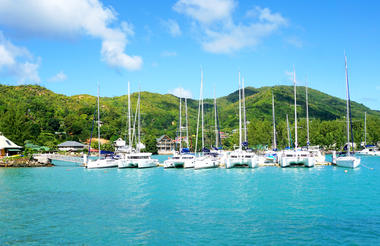
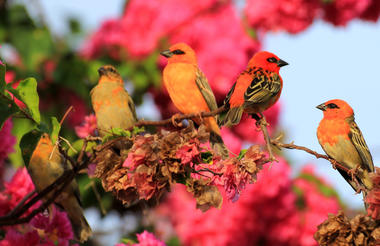
Comoros
Ilha de Mozambique Chapel of Nossa Senhora de Baluarte Fort São Sebastião Ibo Island Quirimbas Archipelago Kilwa Kisiwani Island Zanzibar Stone TownDesroches Island is the main island of the Amirante Islands, which form part of the Outer Islands of the Seychelles. This idyllic little island is protected by a pristine coral reef and is circled by fourteen kilometres of exquisite white-sand beaches. Visitors can look forward to staying at the Desroches Island Resort - the only resort for hundreds of miles. This impressive resort’s sense of exclusivity and isolation along with its excellent service, food and surroundings make it a luxury holidaymaker's dream retreat. Guests can explore the island by bicycle or enjoy the clear reef waters while engaging in numerous water activities such as snorkelling, kayaking, paddle skiing, fishing and scuba diving.

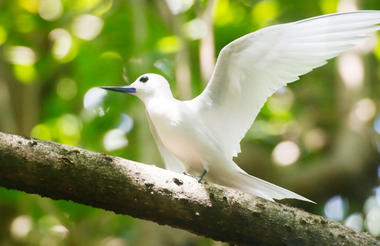

Comoros
Ilha de Mozambique Chapel of Nossa Senhora de Baluarte Fort São Sebastião Ibo Island Quirimbas Archipelago Kilwa Kisiwani Island Zanzibar Stone TownLocated in the Indian Ocean, the Aldabra Atoll is an outstanding example of a raised coral atoll. Due to its remoteness and inaccessibility, the atoll has remained largely untouched by humans for the majority of its existence. Aldabra is one of the largest atolls in the world and contains one of the most important natural habitats for studying evolutionary and ecological processes. It is home to the largest giant tortoise population in the world. The richness and diversity of the ocean and landscapes result in an array of colours and formations that contribute to the atoll's scenic and aesthetic appeal.
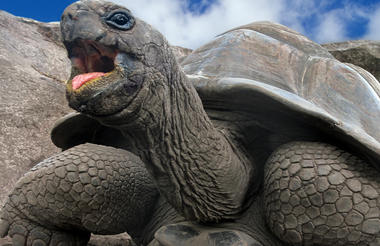
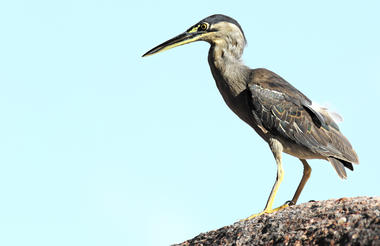
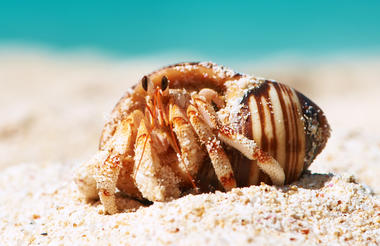
Comoros
Ilha de Mozambique Chapel of Nossa Senhora de Baluarte Fort São Sebastião Ibo Island Quirimbas Archipelago Kilwa Kisiwani Island Zanzibar Stone TownWarm waters encircle a volcanic archipelago in the Indian Ocean, where lush rainforests meet white coral beaches and barrier reefs shelter an underwater world teeming with marine life. Situated between Madagascar and Mozambique, this French overseas department blends African, Arab, and French influences, reflected in its language, cuisine, and traditions. Archaeological evidence traces human habitation back over a thousand years, shaped by Shirazi traders and later European colonisation. The lagoon, one of the world’s largest, supports vibrant coral gardens and endangered sea turtles, while humpback whales migrate through its depths from June to October. Inland, Mont Choungui’s summit grants sweeping views, while Dziani Lake’s emerald waters fill an ancient volcanic crater. Traditional villages, bustling markets, and fragrant ylang-ylang plantations provide insight into daily life. Diving, snorkelling, and hiking through mangroves or rainforests allow visitors to experience the island’s biodiversity and cultural richness firsthand.

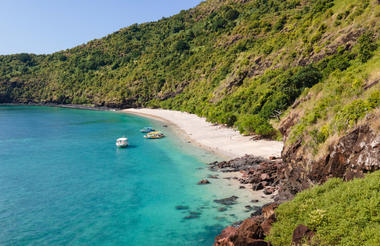
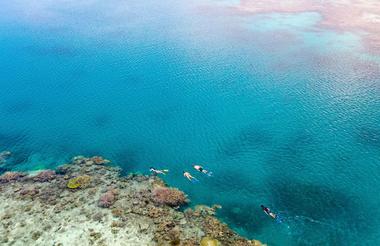
Comoros
Ilha de Mozambique Chapel of Nossa Senhora de Baluarte Fort São Sebastião Ibo Island Quirimbas Archipelago Kilwa Kisiwani Island Zanzibar Stone TownOff Mozambique’s northern shores lies one of the country’s lesser known travel treasures - Ilha de Mozambique. In the 17th century, this small island served as a trading post controlled by colonialist powers. The ruling Portuguese bartered gold, ivory and, most significantly, slaves for silk, spices and other exotic goods. Much of the historical architecture from this era remains today and as a result, Ilha de Mozambique was declared a Unesco World Heritage site in 1991. Stone Town is the island’s historical quarter, where you can wander past ancient forts, churches and mansions still elegant though weathered by the centuries. Makuti town is the modern part of the island, where you can get an authentic sense of how the residents of today live. Visit vibrant markets where the air is redolent of chilli and spices, and brightly coloured traditional fabrics paint a vivid backdrop to the comings and goings. The coastline is absolutely beautiful - fringed with secluded sand beaches where you can swim or snorkel in warm turquoise waters amidst brightly coloured tropical fish.



Comoros
Ilha de Mozambique Chapel of Nossa Senhora de Baluarte Fort São Sebastião Ibo Island Quirimbas Archipelago Kilwa Kisiwani Island Zanzibar Stone TownLocated just off the northern coast of Mozambique, the Quirimbas Archipelago dots the glittering Indian Ocean. It is renowned for its rich history and natural beauty featuring white-sand beaches fringed with low-key resorts and offers some of the best diving in the country. The archipelago is home to some of the most unspoilt beaches and coral reefs found anywhere in the world, featuring an abundant array of Mozambique's spectacular marine life. The Quirimbas Archipelago is comprised of a chain of over 25 coral islands, which escaped the 20th century with almost no development. Many of these islands fall within the Quirimbas National Park, providing a marine sanctuary for whales, dolphins, and endangered dugong. The area is known for its high-quality dive sites, many with exceptional drop-offs.



Comoros
Ilha de Mozambique Chapel of Nossa Senhora de Baluarte Fort São Sebastião Ibo Island Quirimbas Archipelago Kilwa Kisiwani Island Zanzibar Stone TownLocated on Tanzania’s eastern coast, Kilwa Kisiwani Island is a quiet fishing community which once served as the seat of sultans. It has been designated as a UNESCO World Heritage Site for its historical significance, which includes the ruins of the Kilwa settlement one of the most important vestiges of ancient Swahili/Arab history along the East African Coast. Visitors can use the nearby town of Kilwa Masoko as a base to explore this island. There are a variety of activities and attractions to enjoy including: exploring the Husuni Ndogo, meaning ‘Little Fort’, built from coral rubble and limestone mortar; discovering the 14th-century Palace of Husuni Kubwa, a former sultan's palace; and visit the Great Mosque, said to be one of the earliest surviving mosques on the Swahili Coast.
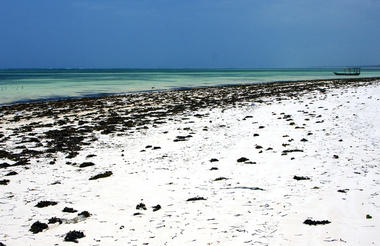
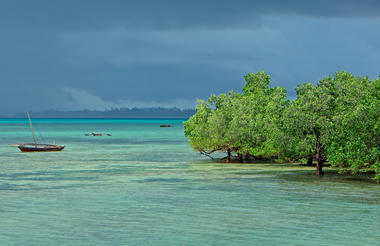
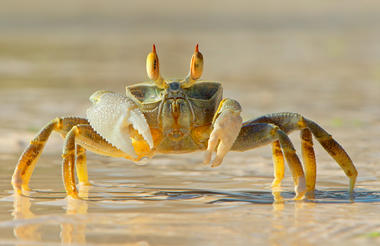
Comoros
Ilha de Mozambique Chapel of Nossa Senhora de Baluarte Fort São Sebastião Ibo Island Quirimbas Archipelago Kilwa Kisiwani Island Zanzibar Stone TownResting approximately 40 kilometres from the Tanzanian coast, Zanzibar Island is characterised by exquisite white-sand beaches fringed by palm trees, and the turquoise waters and reefs here brim with an abundance of exotic marine life. This is a great mecca for watersport enthusiasts who flock here for excellent scuba diving, snorkelling, deep-sea fishing, kayaking, and kitesurfing opportunities. Visitors can even go sailing on traditional dhows. The island’s old city, Stone Town, features a maze of narrow alleyways lined with boutiques, bars, restaurants, bazaars, mosques and ornate Arab houses.
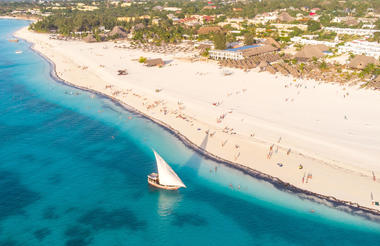
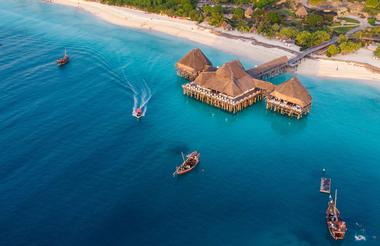
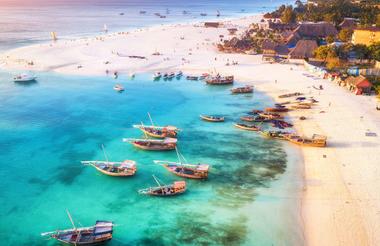
Comoros
Ilha de Mozambique Chapel of Nossa Senhora de Baluarte Fort São Sebastião Ibo Island Quirimbas Archipelago Kilwa Kisiwani Island Zanzibar Stone TownSituated in Tanzania’s central-northern region with the Lake Manyara to its east and the Manyara Escarpment to its west, the Lake Manyara National Park offers breathtaking views and a large variety of habitats supporting an array of wildlife. This small park is home to surprising biodiversity and features a magnificent landscape of acacia woodlands, forests, baobab strewn cliffs, algae-streaked hot springs, swamps and the lake itself. The park supports over 400 species of bird and the largest concentration of baboons anywhere in the world. Other species to spot include giraffes, zebras, wildebeest, impala, waterbuck, warthog, the Cape clawless otter, and the Egyptian mongoose. Don’t miss the opportunity to see thousands of flamingos on the lake, the renowned tree-climbing lions, and large families of elephants strolling through the forest.
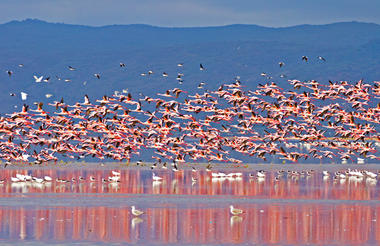
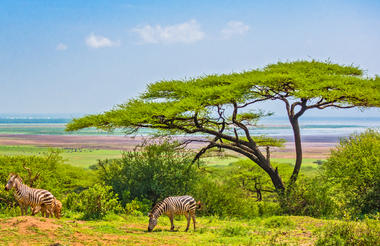
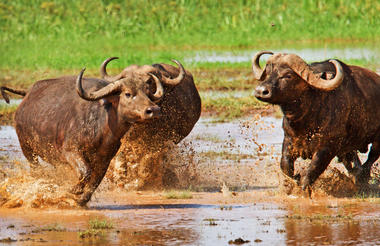
Travellers heading for the Serengeti and Ngorongoro Crater will pass through the town of Karatu in the green hills of Tanzania’s northern highlands. Presided over by the towering Ol Deani Volcano, this small, colourful town serves as a popular overnight stop for visitors exploring the area’s many game parks. The town offers a variety of activities including browsing the bustling marketplace, sampling beer at a local brewery, visiting a traditional homestead, or taking a guided walk through the Ngorongoro Forest in search of waterfalls and caves. Whether you are looking for cultural tours, hiking and biking opportunities, a chance to enjoy an authentic rural Tanzania experience, or simply a break between safari game drives, this underrated town has plenty to offer.



Northern Tanzania's Southern Serengeti, together with Kenya’s Masai Mara Game Park, form Africa’s most famous wildlife park. The image of acacia trees on an endless grass plain epitomises Africa for many. The annual wildebeest migration through the Serengeti and the Masai Mara is the largest mass movement of land mammals on the planet – with more than a million animals following the rains. Large prides of lions, and herds of elephants, giraffes, gazelles, and eland can be seen, making for some phenomenal photography opportunities. Hot air balloon rides provide further inspiration. Visitors can also look forward to cultural tours to delve into the rich heritage of the Masai people.
